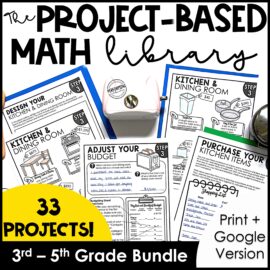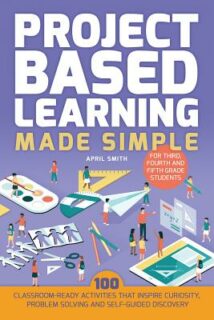You may have heard differently, but I’m here to say that you can use project-based learning all year long. It’s not only a fun end-of-the-year activity. In my opinion, it’s the best way to teach and the easiest way for students to see how their learning fits into their lives.
I will show you how you can use project-based learning (PBL) to teach difficult standards. And we’re not going to just review and have fun with these lessons but actually teach the standards, including math standards, like multiplying fractions.
If you’re new here, let me give you a little background. Over the years, I’ve done a lot of PBLs with my students. I’m the author of Project Based Learning Made Simple: 100 Classroom-Ready Activities that Inspire Curiosity, Problem Solving and Self-Guided Discovery for Third, Fourth and Fifth Grade Students.
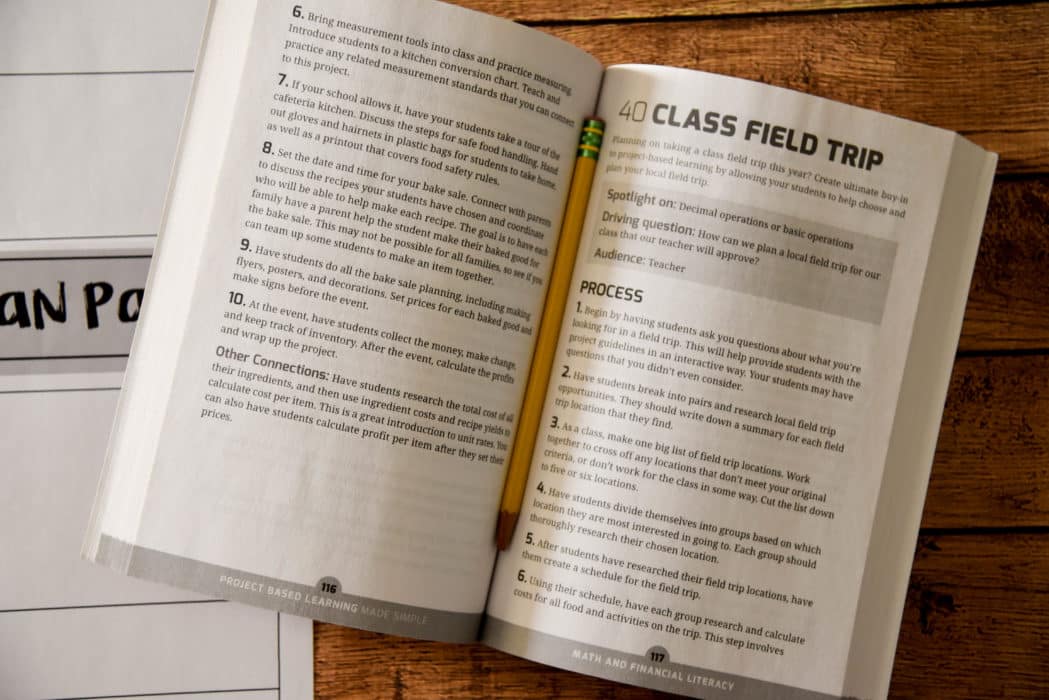
Over the years, I’ve heard many teachers talk about project-based learning and say things like, “I can’t do this. I don’t have the supplies or the time to plan it.” So, I’m excited to show you how I plan and implement PBL, so my students learn the skills as I teach through the projects.
Project-based learning example
I will use the example of a project I do in my classroom where students design a theme park. This project focuses on math and includes reading, writing, social studies, and science. Using projects like this helps me keep students focused and engaged when I want them to understand the skill and how to apply it.
So it seems crazy to take students through a one to three week lesson and have them master multiplying fractions to the point where they’re doing it on their own at the end, but it’s totally possible.
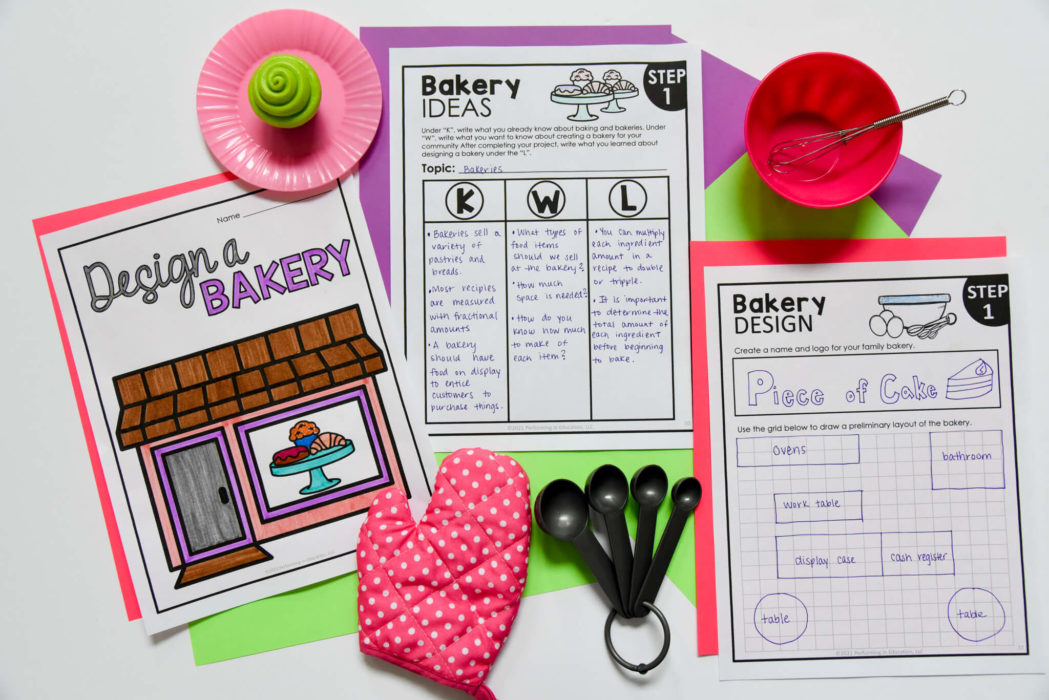
Teaching through project-based learning
One of the biggest problems project-based learning faces is trainers placing too much emphasis on students learning independently. While student choice is a big part of PBL, only focusing on that makes teachers think students can’t do it if they don’t know how to do the skills involved. These types of messages make it sound totally hands-off.
So the first thing you need to know is that project-based learning is not hands-off on the teacher’s part. It requires you to plan and guide students throughout the project. You can still do whole group and small group mini-lessons. And you will still actively teach your students.
You’re not going to expect them to learn to do the skills simply from inquiring about things. And that’s a common problem I notice in blog posts, videos, and messages from trainers that come to the districts. They say that your students need to learn through inquiry. That’s great, and they will learn that way, but there are moments when you’ll have to sit down and teach your students how to do things like multiply fractions.
These skills aren’t going to be just learned by them researching and looking online. That is not how it works.
To use PBL in a way that teaches the skills and standards, we need to sit down and develop a way to guide students through learning and knowing how to apply them. So I will go over the very simple outline I use for all my projects. It allows me to plan what key skills I want my students to tackle and helps me make it authentic.
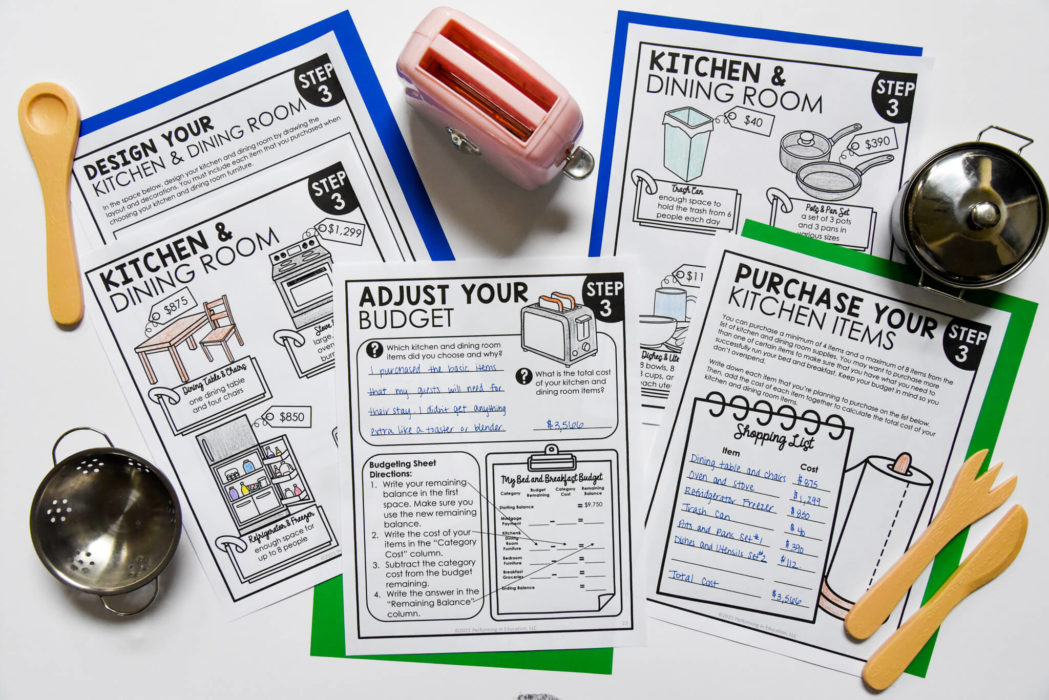
Project-based learning lesson outline
We’re going to look at this theme park project and how we’ll use it to teach students the math skill of multiplying fractions. This is not an easy skill. My students struggle with it every year and seem to lose motivation because it is so difficult. So, allowing students to learn this skill in a real-life scenario has been super helpful.
My project-based learning lesson outlines always include the following:
- Significant content
- Driving question
- In-depth inquiry & choice
- Critique and revision
- Public audience
- 21st century
In this outline are the elements of project-based learning I want to organize so I know my students are getting an authentic PBL experience. I follow this outline whether the project will take one week or three weeks. These are not the step-by-step lessons or the teaching I’m doing; they are the general outline. I will follow this to ensure students have a good authentic experience.
Significant content
Significant content highlights what skills I am going to teach. In our theme park example, I will teach how to multiply a fraction by a fraction and how to multiply a fraction by a whole number. In addition, we will incorporate critical thinking and presentation skills. Students will learn and practice these skills, put them together, and independently apply them.
Driving question
Including a driving question is one of the key differences between a regular stand-alone lesson and project-based learning. The driving question drives every single activity we do, whether in whole group, small group, or independently finding information. Every single thing comes down to this driving question.
In this example, our driving question is: How can I design a theme park with a variety of entertainment options that customers will enjoy?
So, that is our focus, and we will be multiplying fractions every step.
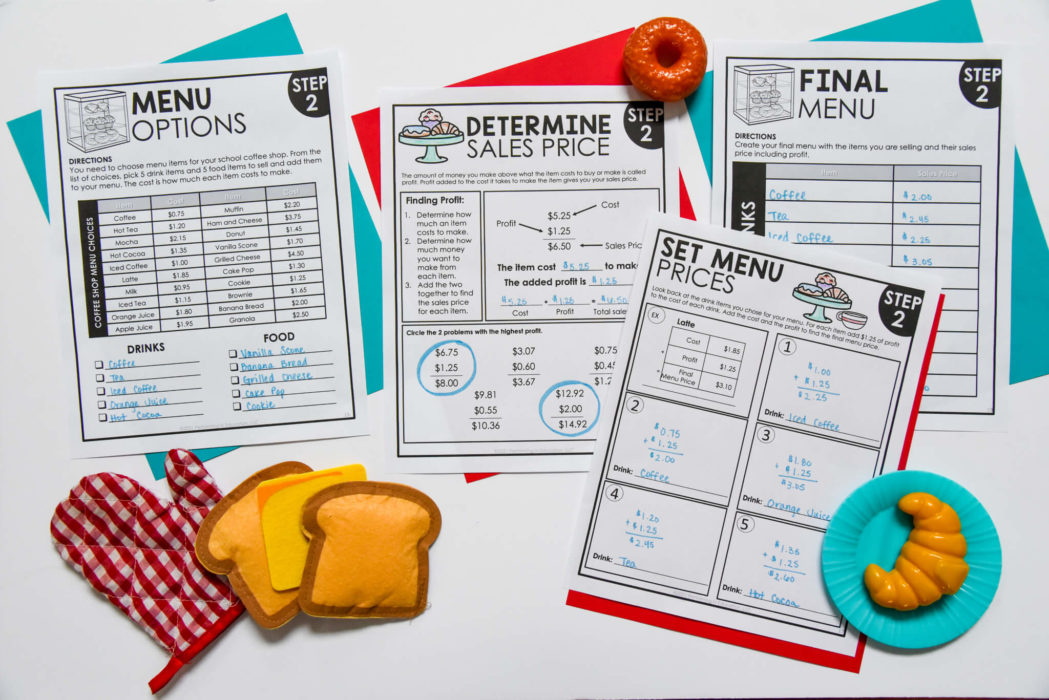
How to teach fraction multiplication with PBL
First, we are going to teach students how to multiply fractions. We will not get stuck in the mindset of “it’s not PBL if we give them direct instruction.” Instead, we are going to show them how it works within the context of the project.
We will use our driving question to find out how multiplying fractions relates to creating a themepark. Then, we’ll use that in context to teach, practice, and apply.
We will still use our visual models when teaching and while students are practicing the skill. This is because visual models are so important. We want students to know how everything works and to have hands-on activities. Remember, we want to teach students the skill.
The difference is we’re not just doing that skill in individual lessons; teach, practice, teach, practice. We’re doing the learning to get us further in our project of designing a theme park.
As students learn the skills and get really excited about the project, we’ll let them explore and create their own theme park using what we’re giving them as a guideline. We can’t just hand them paper and say, “Cool, you know how to multiply fractions. Make a theme park.” They wouldn’t know how fractions related to a theme park in the first place.
So you will walk them through what math to use on each step and how it relates to the concept. We’re going to continue to pull small groups for students who are struggling. We’ll partner students up to discuss it, work together and collaborate. And we’ll discuss with the whole group and teach and reteach the skill as needed. All of those things will happen within our project.
This means that PBL doesn’t mean you have to completely change the way you teach. It just means you need to tweak the way that you plan. It means you need to find a way to connect real authentic situations with math skills and all the other skills students are learning.
And when you plan that out, you can guide students step by step using whole-group lessons, small-group lessons, and intervention. You can still do all the things you usually do in your classroom. And you’ll have students heavily motivated by the topic and seeing how everything fits together and works daily.
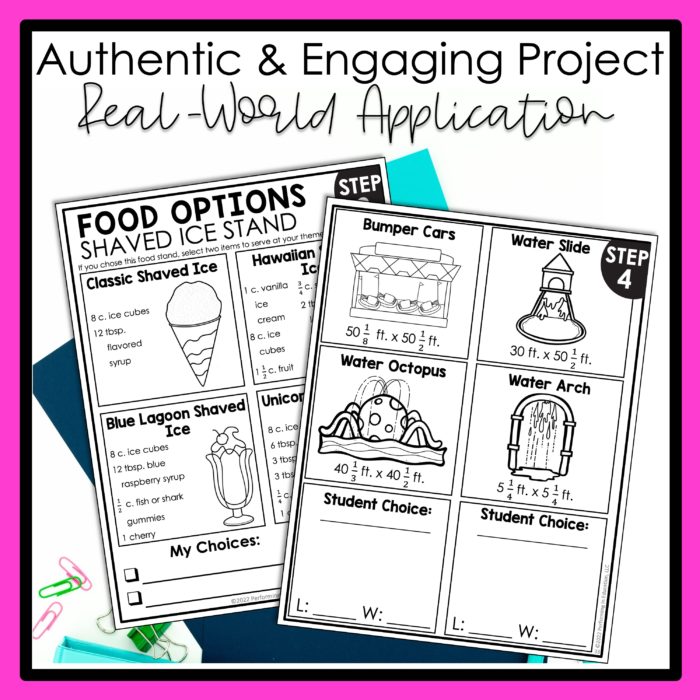
Students engage with project-based learning
I had a lot of students who were not showing up for school before I started to use PBL. Their parents were working and not making sure they were getting to school, along with the challenges of Title I schools. But once I started doing PBL, my students showed up and engaged. They were excited about doing the math. So if you have a situation where your students are really not interested in math or are really behind, and you can’t seem to reach them, PBL is the absolute best.
If you got one thing from this blog post, I hope you understand that project-based learning is just a guided lesson that moves daily and flows into a completed project at the end. Students have a purpose. Students have motivation and excitement. And the math skills they learn are actually going to be real-life scenarios.
If you want to try this or learn more, I have a few options to help you. First, you can read Project-Based Learning Made Simple. It covers planning PBL and includes 100 ideas for upper elementary classrooms.
And if you don’t want to do any planning and just want it handled for you, I have project-based learning activities for every math skill for 3rd-5th grade. They include the full lesson outline and will tell you exactly how to guide students through authentic learning within the project.
In addition, if you’re interested in learning more about project-based learning, I encourage you to follow me on YouTube, where I share weekly videos and free resources.
